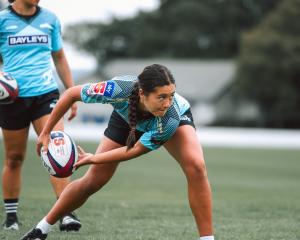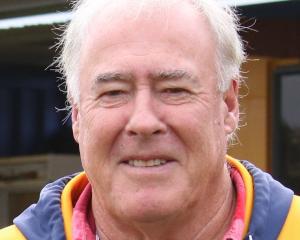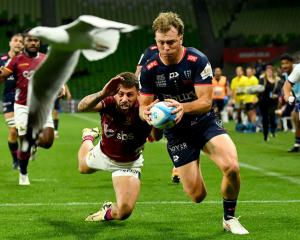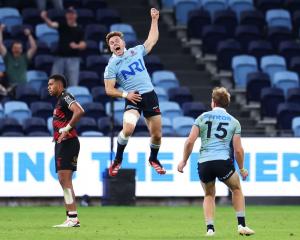The unfortunate case of George Leaupepe has demonstrated the depths of despair the early generation of professional rugby players reached while highlighting how much better the current crop have it.
As a player in the mid 1990s to mid 2000s Leaupepe had good income, adoration, access to medics and daily routines mapped out for him. He was part of a Counties team that were almost unstoppable with Jonah Lomu and Joeli Vidiri on the wings and he won 26 caps for Samoa.
But once he retired, he says all of his support networks were taken away and he had neither the education nor psychological skills to successfully transition into 'normal' life.
He also says no one was interested in helping him. In his desperation he turned to drugs to relieve chronic pain, the result of the hammering his body took, and to alleviate the mental anguish that grew as a result of feeling abandoned by the sport.
Leuapepe is not an isolated case from the era of players who straddled the amateur and professional eras.
New Zealand Rugby Players' Association boss Rob Nicol estimates that probably about half of Leaupepe's generation were 'lost' both personally and professionally when they first retired from the sport.
"It wasn't a case of abandonment or anything malicious," says Nicol.
"No one really knew. It took the sport 10-15 years to get a grip on what was required to support and properly look after the players both on and off the field."
The term 'lost' generation is apt: the speed at which rugby evolved in the mid 1990s threw up more problems than there were solutions.
In the years leading up to the decision to turn the sport professional in 1995, many leading players in New Zealand were holding sham jobs. Rugby was their main focus, but they had to pay lip service to an employer.
Once the game turned professional, players could drop the pretence and focus purely on playing and be well paid in the process.
But Nicol says that the professional game as a whole at that time - coaches, administrators, players - didn't operate with specific expectations around personal responsibility and development.
In those early years players would retire and largely be on their own - and many didn't have the skills to build a career off the field.
They disappeared - fell into financial and personal strife and it wasn't until 2000 that the problem was widely enough recognised for the NZRPA to be formed.
If there is a silver lining to Leaupepe's story it is that his hardship - and that of many of his peers - has been duly recognised to the extent that no one involved in the game wants to see more players suffer in the same way.
In 2009, the NZRPA conducted a major survey of former players which drew an alarming picture of how life had been for those early professionals.
Depression and anxiety was disproportionately high. Many players suffered financial hardship and connected stress at not knowing how they could turn their lives around.
Nicol has used that research as a guiding light - as a basis from which to improve the lives of the current generation and help them prepare for life after rugby.
Players today are swamped with good advice from their late teens and encouraged to build 'life skills' that will not only help improve their performance and better equip them to cope with the demands of being a professional, but leave them in better standing when they can no longer play.
"I have spoken to George," says Nicol, "and while he'd be the first admit to admit he didn't always make decisions that were ideal, there are plenty of young men who could be guided by him.
"I think in the last five years we have developed an environment [in professional rugby across New Zealand] that we can be really proud of but we can never take that for granted or be complacent."











